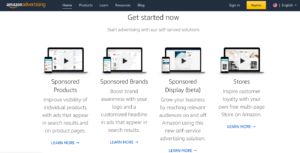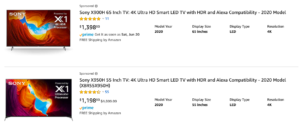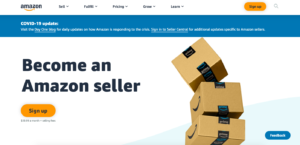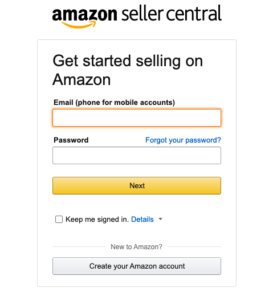Amazon is the world’s largest online retailer. Jeff Bezos has built an e-commerce empire that the American people love. As of January 2020, Amazon Prime has 112 million American subscribers, if you’re doing the math in your head right now, that’s one-third of the total United States’ population. The Amazon Store is simple to use, offers unmatched selection, and often has lower prices than competitors. With millions of visitors each day, the online retailer offers a great opportunity for an e-commerce business to advertise their products on Amazon’s storefront.
What makes Amazon a smart choice for companies that sell tangible products, is that the retailer has actual buying data for individual customers. Google has search history and Facebook has personal interest data, but Amazon has your cart and product viewing information. This data helps e-commerce companies better target potential customers who are already on a digital storefront. With comparable average CPCs to Facebook, Amazon advertising is receiving more marketing budget investment from e-commerce businesses.
To boot, the Amazon Store gives advertisers a variety of ad options for their company and products.
- Sponsored products
- Sponsored brands
- Sponsored display
- Individual business store
- Display ads
- Video ads
- Custom ads
- Amazon DSP

What Do Amazon Ads Look Like?
Amazon has done a good job at disguising paid ads, as almost all sponsored product content looks native to the store visitor. These paid ads often sit atop the page or along the sidebar, and feature a small asterisks note saying “sponsored.” However, the way the Amazon Store is set up lends paid ads to seamlessly blend in with organic search results, unlike Google PPC ads. If you feel like your customer base is adverse to clicking on something that identifies as an ad, then sponsored Amazon ads could be the way to go.


How to Get Started Advertising
There are a couple of different routes to getting verified to sell on the Amazon store — depending on your business status. First, you will need to set up a seller or vendor account with Amazon.

Seller accounts are available to anyone wishing to sell their products on the Amazon Store. A seller account is responsible for listing, pricing, and marketing their products themselves. This allows you to have greater control over your inventory and price, but you are limited with advertising opportunities.

Vendor accounts are only available by invitation only from Amazon. Invitations are sent to companies that have noticeable authority in their industry and Amazon believes that partnering with that company will bring themselves additional revenue. Therefore, a vendor account works as Amazon buys your product(s) and then lists and resells your products to their online consumers. This account provides greater advertising options and the potential for greater sales figures but lowers your control over inventory and pricing.
If you are wishing to become an Amazon vendor partner, just focus on continued company growth, eventually, you will see interest from the retail giant. Until then, a seller account enables you to get your feet wet with Amazon customers and expand your digital reach. Once you have your accounts set up, you’re ready to start listing and running ad campaigns!
